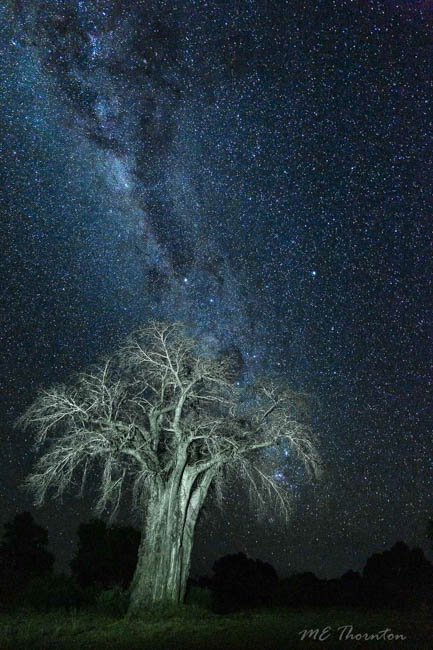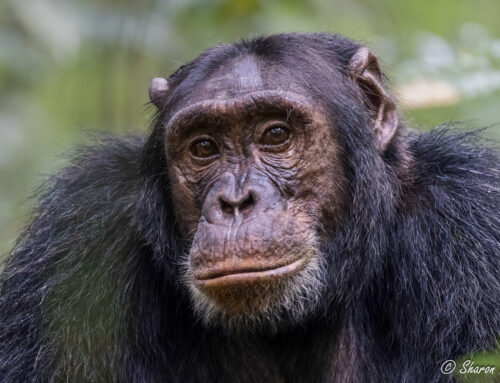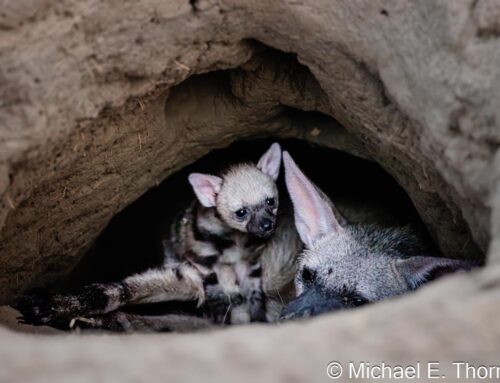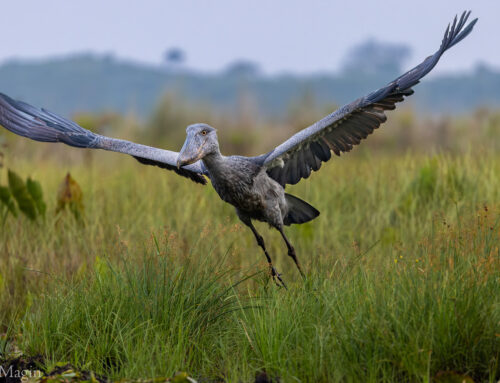I am thrilled to share a report that Michael Thornton has written about his time in the Luangwa with me in June 2019. There is also a selection of his images which brilliantly illustrate the story and the experience! It’s clear from his words that he’s a committed and knowledgable naturalist and he was a pleasure to take on safari. Fingers crossed that our plans for September 2021 in Kafue National Park are able to go ahead! Over to you Michael:
In late June of 2019, I joined Edward Selfe for a photo safari in South Luangwa National Park. Two years later, I’ve never stopped dreaming about it.
To photograph African wildlife, I want a safari dedicated to that goal: one operated by a professional wildlife photographer and professional guide. Someone who knows the place, its wildlife, and their ecosystems intimately. Ideally, someone who lives there year-round.
All of which describes Edward Selfe perfectly. Professional wildlife photographer, professional guide. Outstanding naturalist – and he’s lived in South Luangwa, year-round, for a dozen years.
Edward’s safaris are exactly what every wildlife photographer dreams of: total immersion in a place for eight, ten, or more full days and nights of photography, with no more than four other people — photographers all – and just one to a seat in the safari rig!
Our camps, food, and support staff were fantastic. And although we were far into the wilderness (where experience tells you that things will inevitably go wrong), our safari went without a single hitch. Our photography needs were well planned, and every convenience arranged.
See for yourself. Let me take you on our 2019 South Luangwa safari.
Daily routine: it’s about the Light
The first thing that struck me as we began our safari was, of course, the light in the Luangwa Valley. The sky takes on a photogenic haziness as the day progresses, and wildlife really glows, especially in the golden hours. Pukas become a warm red, impala become almost pastel. Leopards can become intense golden or even orange. The earth itself evenings takes on a pink hue. Sunrise and sunset create such rich colors that even the sausage trees glow, like deep cinnamon or California redwoods.
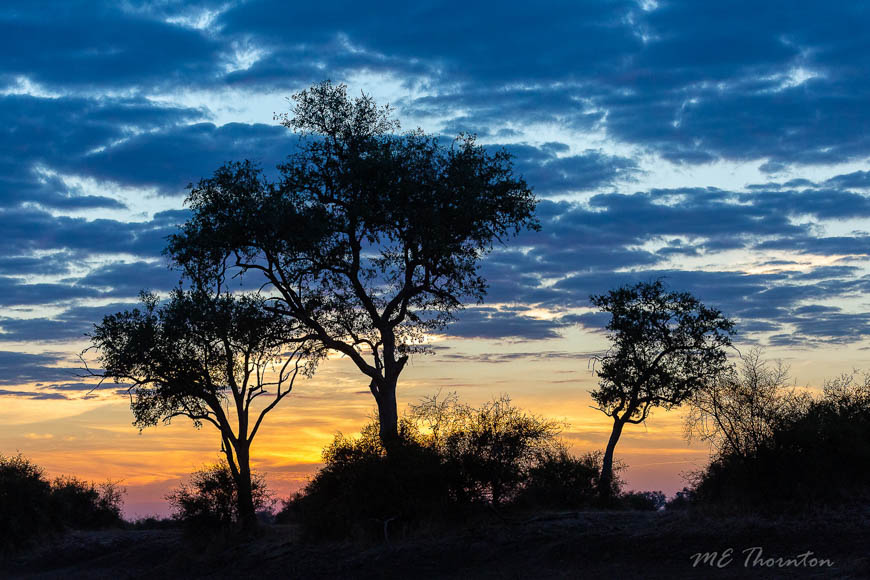
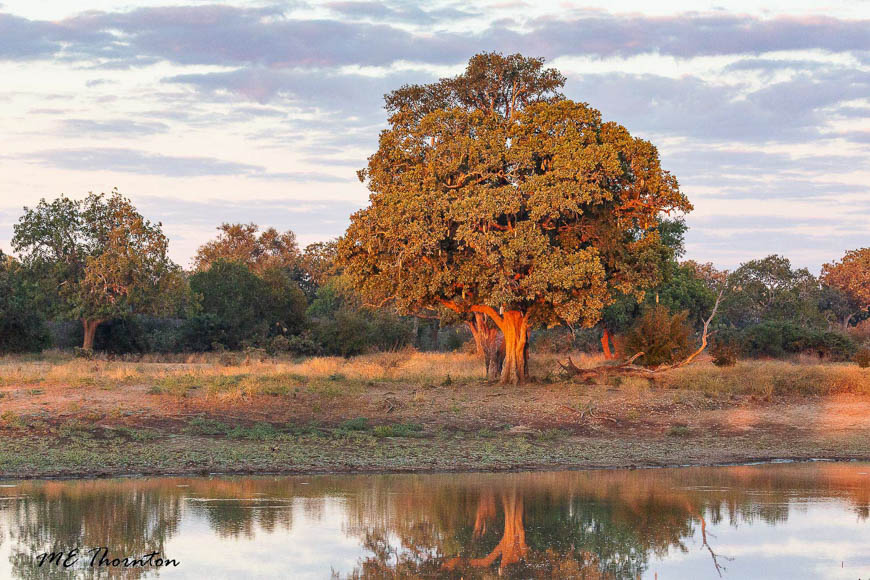
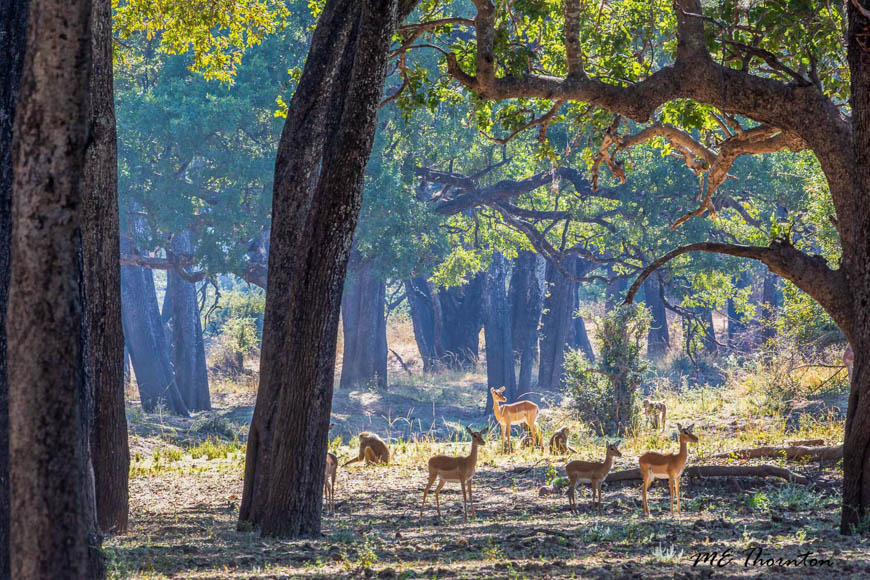
Each day we’d leave camp before sun-up. We’d scout wildlife and shoot photos till perhaps 10:00-10:30 a.m., depending on opportunities, our location, and the light. Then we’d head back to camp for midday meals and downtime.
After lunch, we might share photos with Edward, and he’d offer us personal mentoring. Otherwise, we’d recharge our batteries, upload and back up our images, and nap or relax.
Around 3:00 p.m., we’d climb back into the safari rig and head back out to shoot during evening golden hours. As the sun sank and shadows deepened, Edward would periodically remind us to mind our ISO settings.
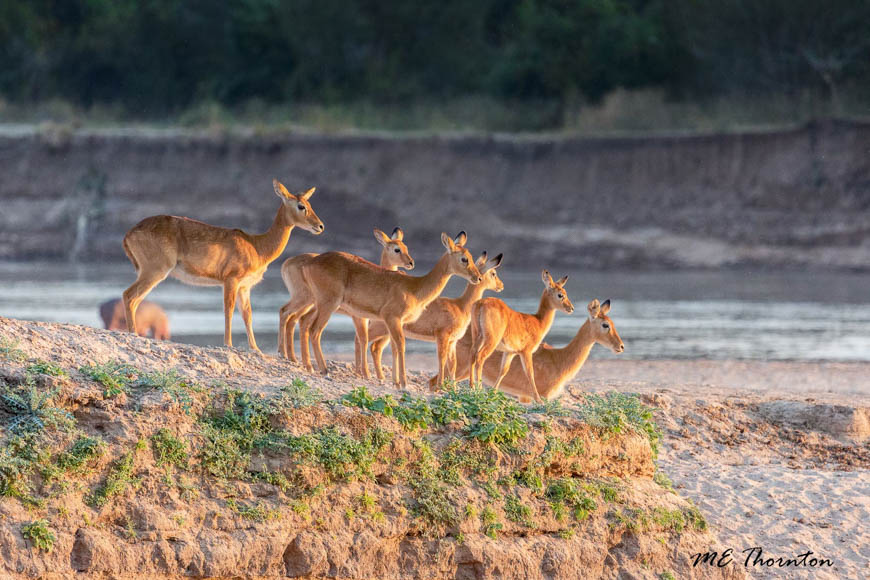
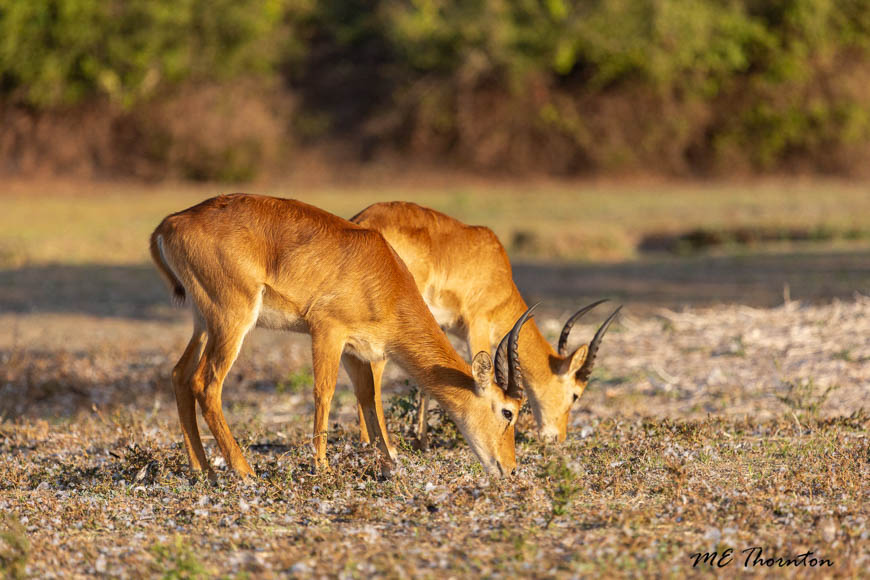
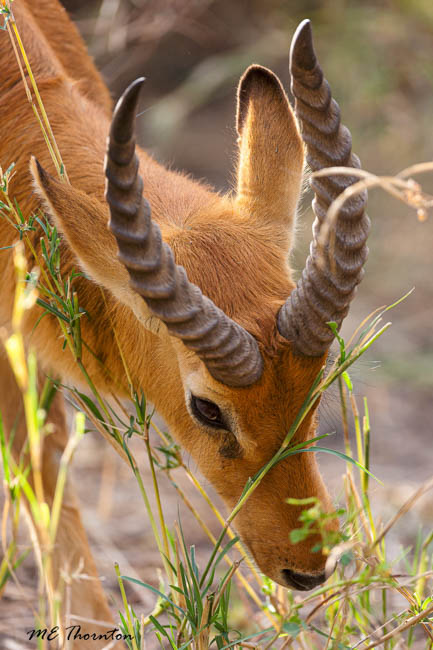
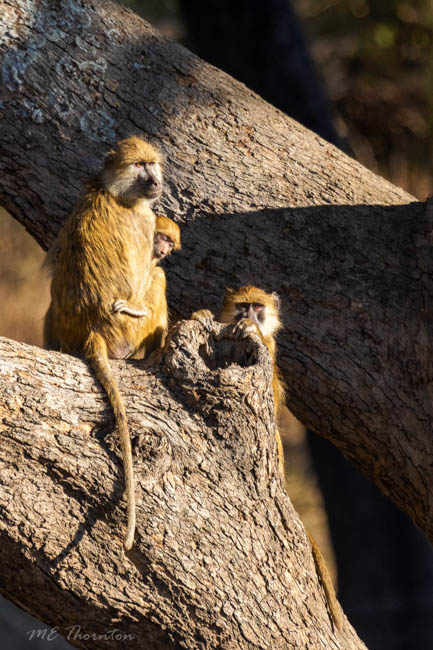
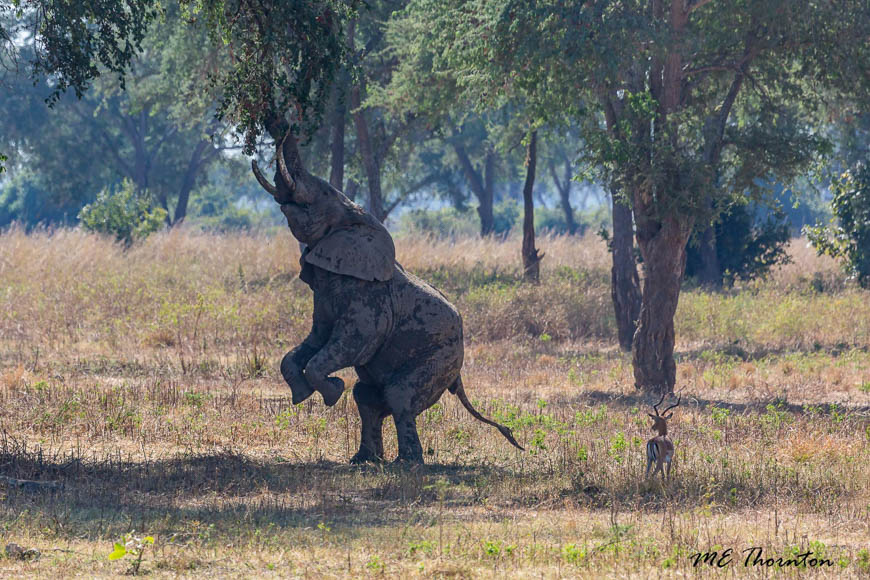
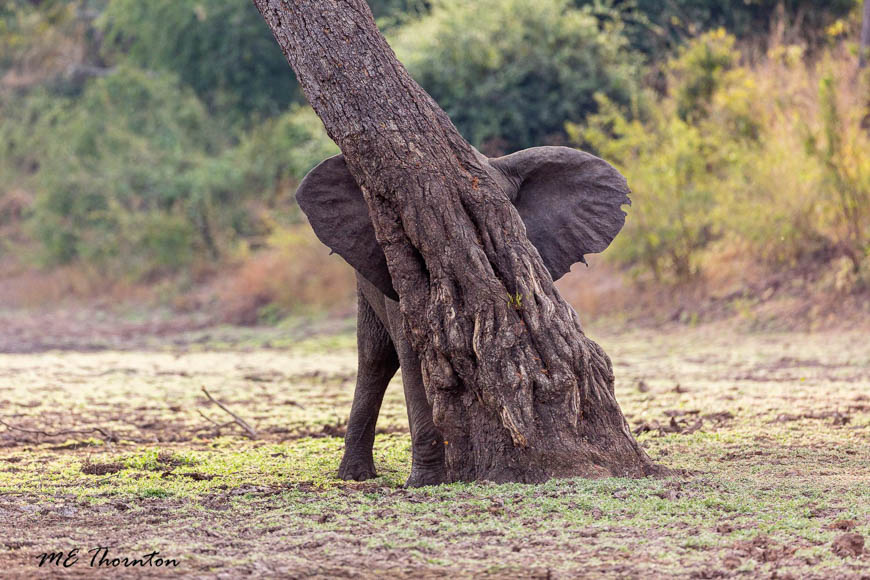
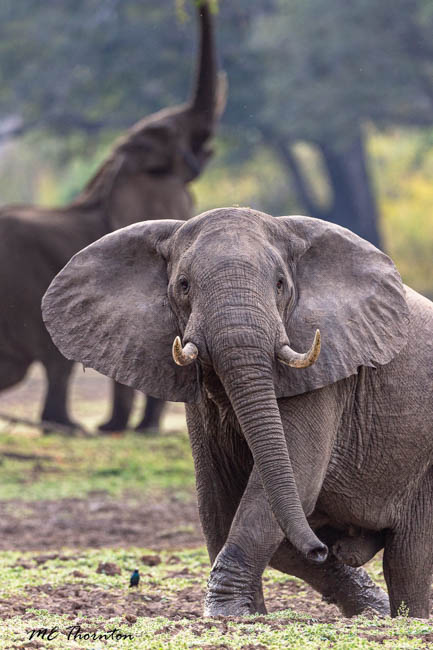
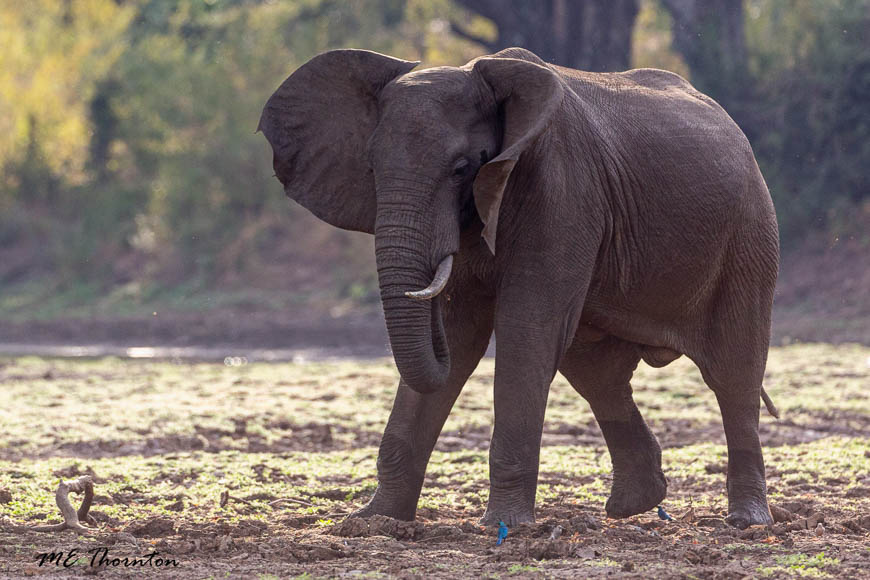
Sometimes we’d stop to just listen, smell, and experience the place – wildlife, the light, and even the silence. I was grateful that Edward appreciates these experiences as much as I do.
After the golden hour, we’d pause for a brief break and then we’d continue for some night photography. Wildlife photography at night was a new experience for me, and it was incredible. We found microfauna like tiny elephant shrews and flap-necked chameleons. We photographed spotted genets, African porcupines, and bush babies. And I don’t recall a single night without big predators.
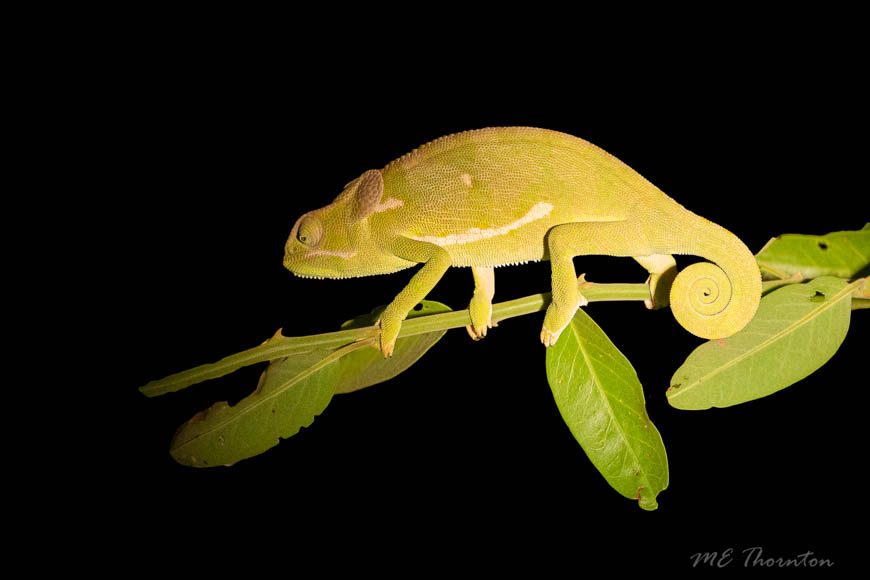
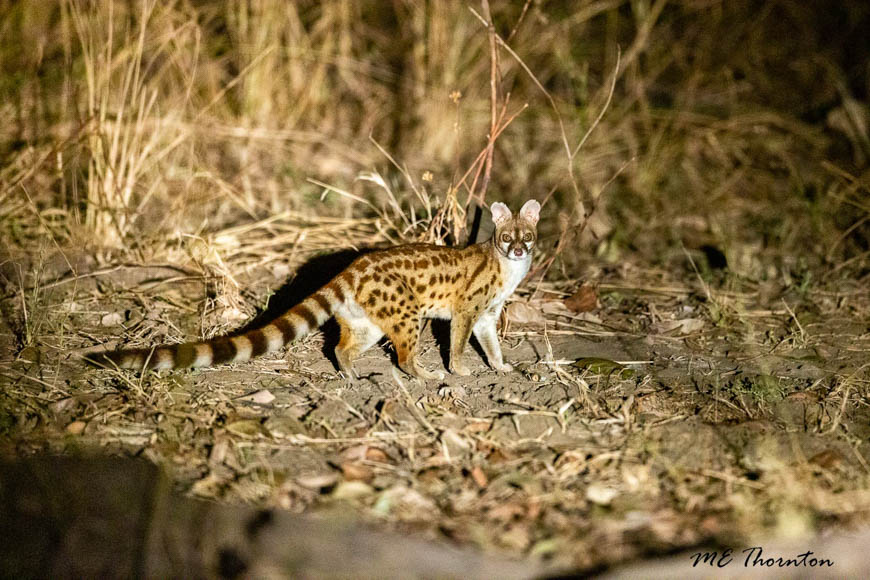
I’m retired from the US National Park Service, and I’ve had personal encounters with most of North America’s “charismatic megafauna.” But Africa at night was a whole new thing: rarely have I been so viscerally reminded that humans are not the apex predators we think we are. Night drives are thrilling, and fantastic for photography.
The Wildlife
Day or night, the diversity and numbers of animals were amazing. Elephants, hippos, impala and puku were practically ubiquitous. Many other species were also common, including several other species of large and small antelope; warthogs, yellow baboons, vervet monkeys, and several species of mongoose. We saw herds of cape buffalo. We also photographed three Zambian specialties: Thornicroft’s giraffe, Blue wildebeest, and Crawshay’s zebra. And birding was spectacular.
We saw lions and leopards frequently. Hyaenas were around day and night, and I fell in love with the much-maligned species.
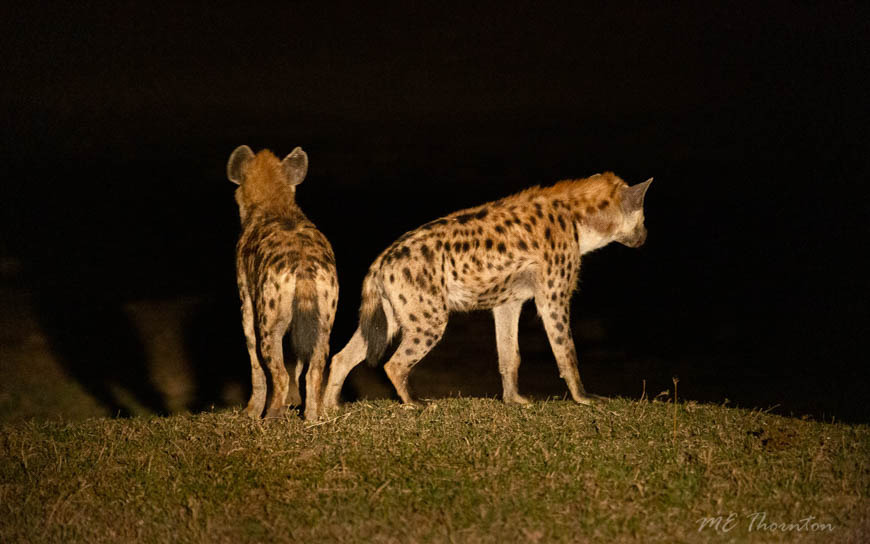
On one night drive we tracked a pride of lions stalking buffalo. As our vehicle crept along, the headlights and spotlight would bounce around as much as the animals, so that lions and buffalo would suddenly appear or disappear in front of, or even beside, us! Neither paid us much attention; they were preoccupied in their own life-and-death maneuvers.
I don’t know if the lions were ultimately successful that night. The pride tangled with one buffalo as we followed, but it managed to escape. Too soon we broke contact as the animals all moved off into brush where our vehicle couldn’t follow. But on several other occasions, we had excellent opportunities to take night photos of lions and leopards – including an accomplished porcupine hunter!
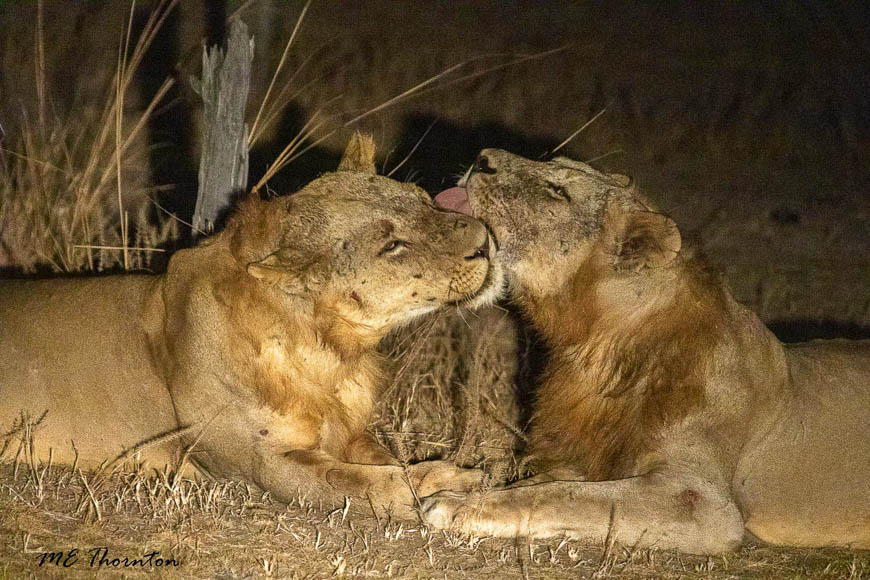
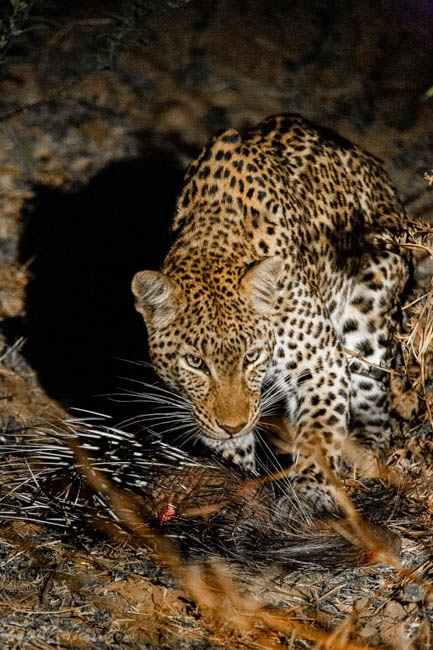
One morning Edward heard a lion pride making a kill. We quickly tracked them down and found the pride on a buffalo. They were still panting, wide-eyed, pumped full of adrenaline, and on razor’s edge. The lions had settled onto their prey and were recovering their wind from the exertion of the kill, but they hadn’t yet begun breakfast. One female eventually moved around the carcass and began to gnaw the buffalo’s nose. On cue, the rest of the pride dived in as we watched. The air was still chilly, and my camera recorded steam rising from the buffalo’s stomach as they first began eating it.
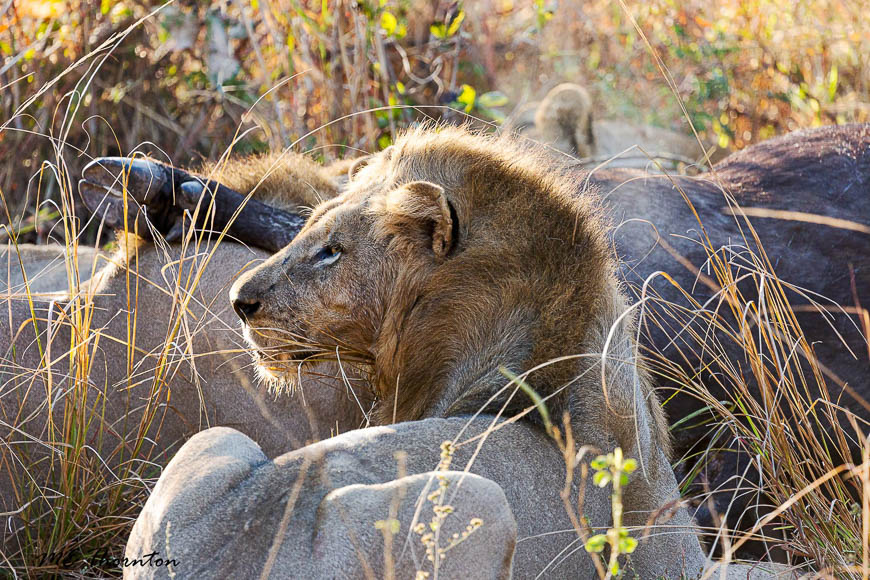
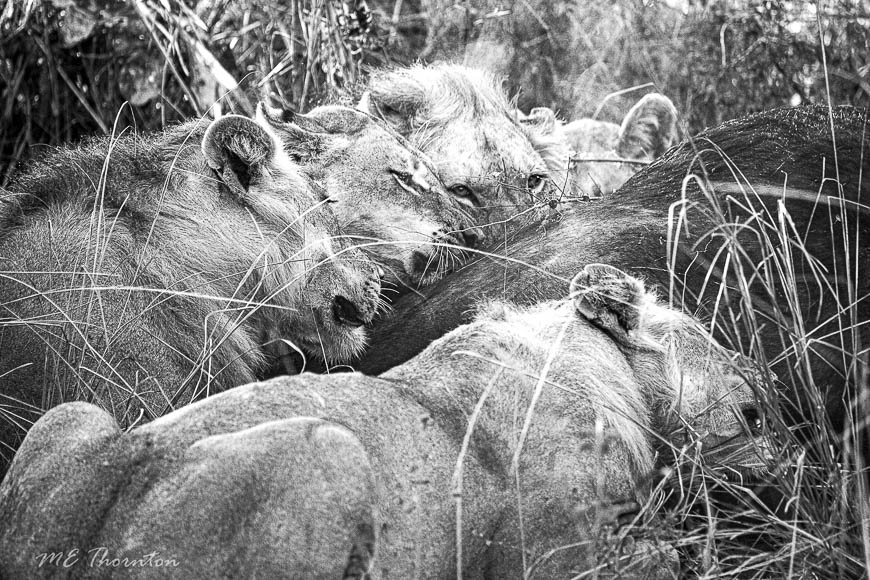
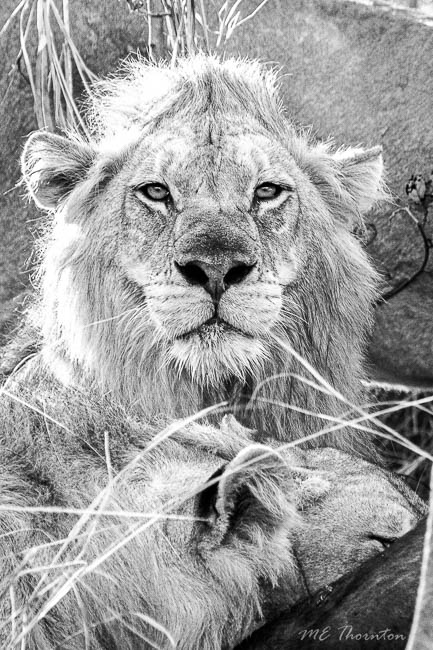
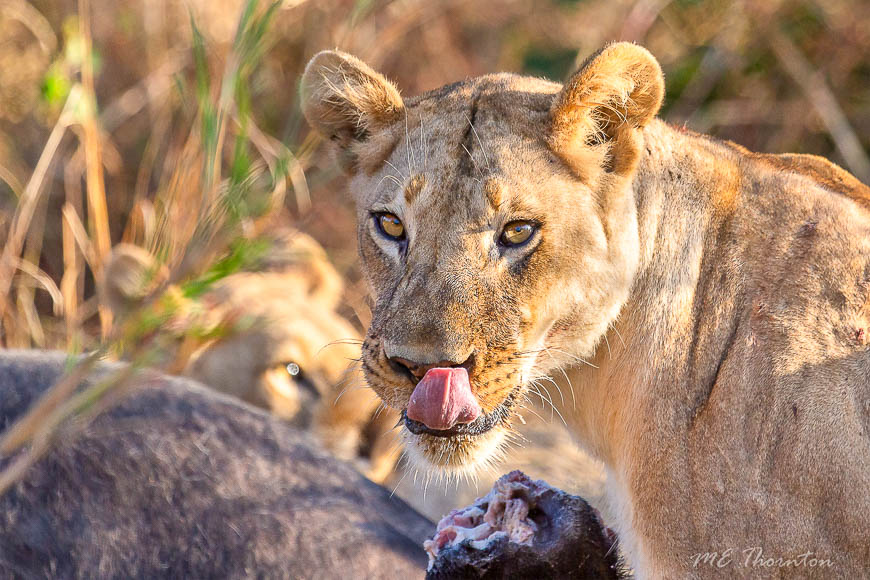
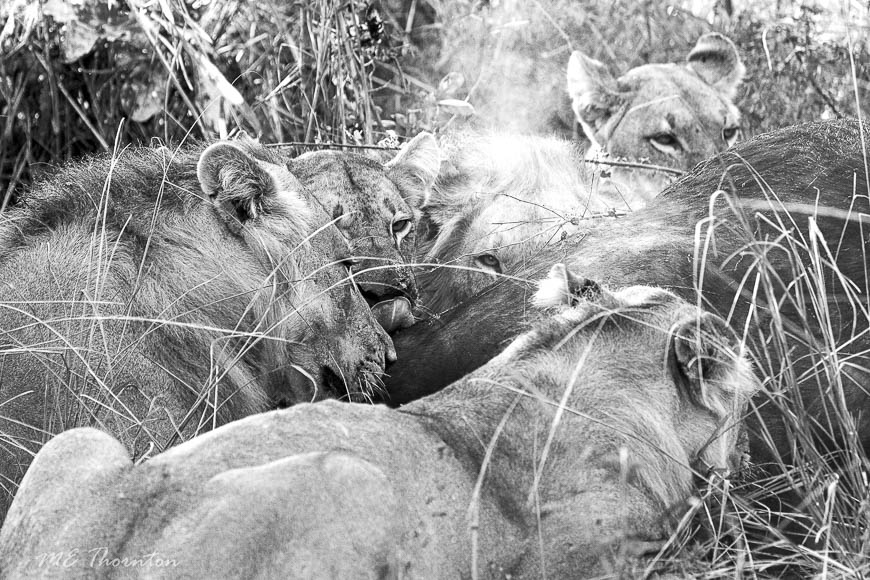
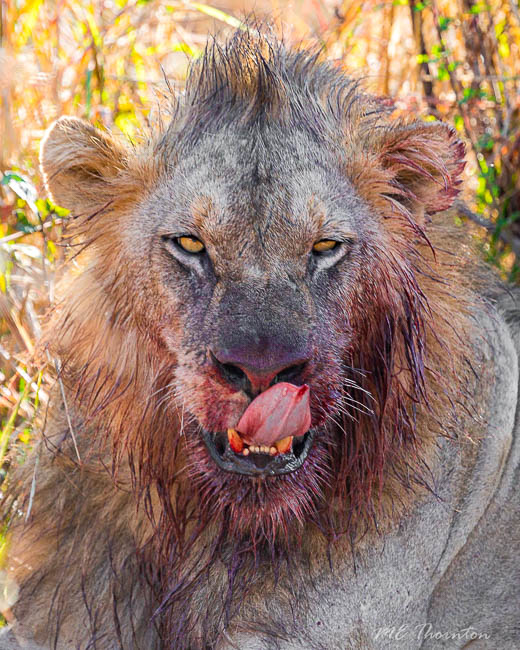
One of my favorite experiences was a visit to a Yellow-billed stork colony. The floodplain below this grove of trees made an excellent airfield for each year’s fledglings to practice their (highly comical) landings. The trees were coated with generations of white guano.
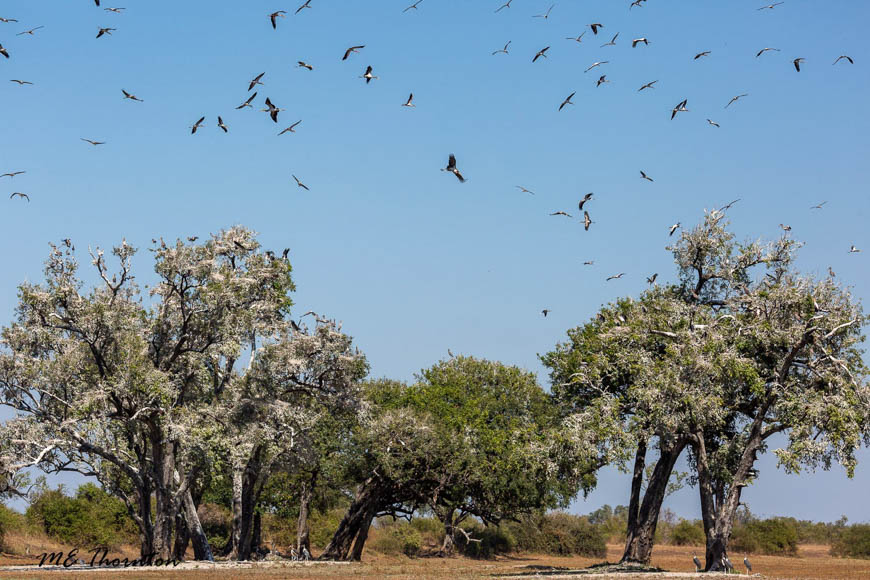
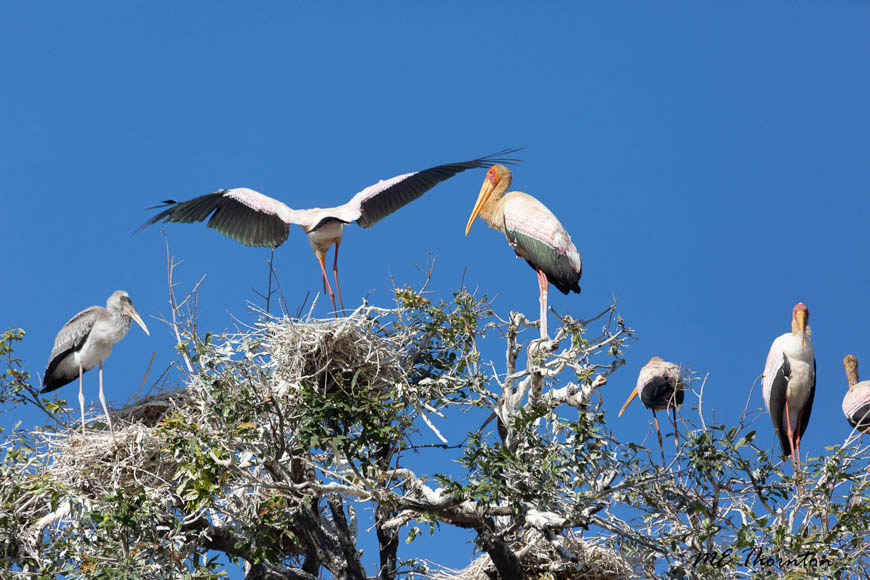
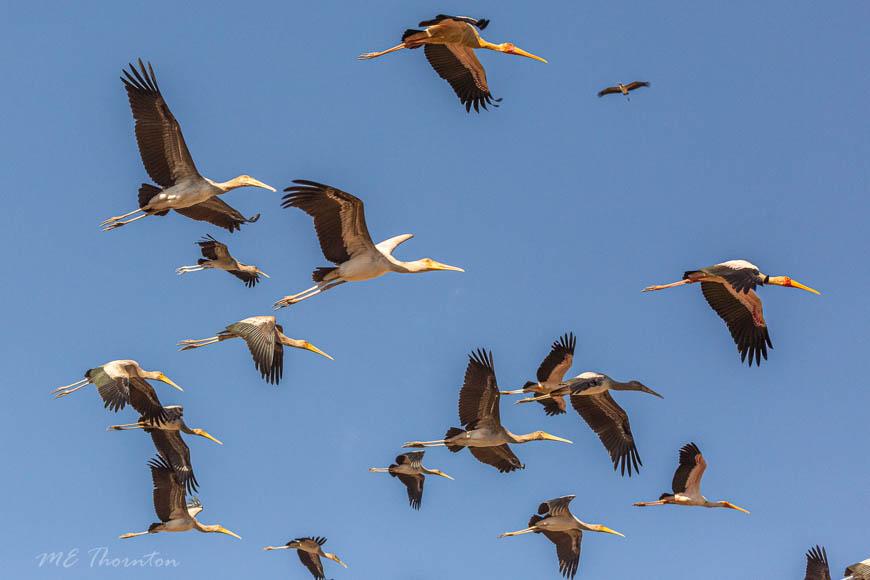
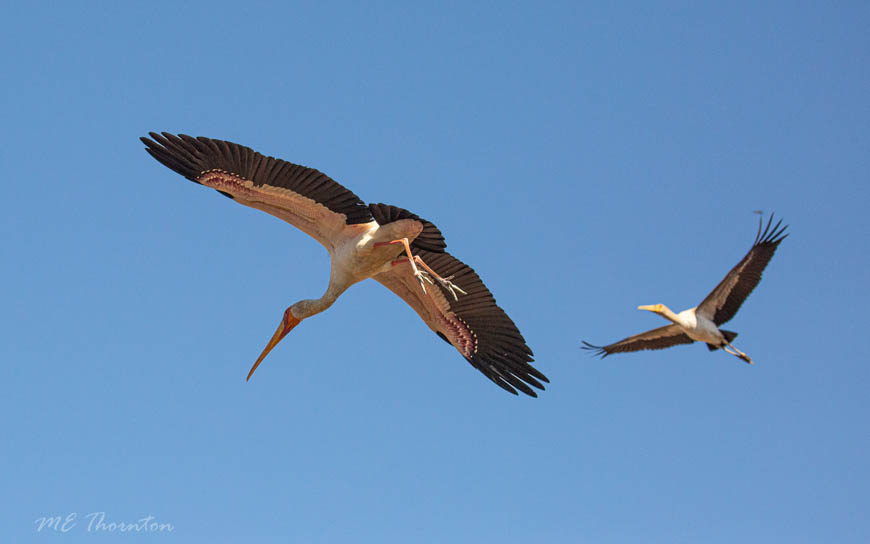
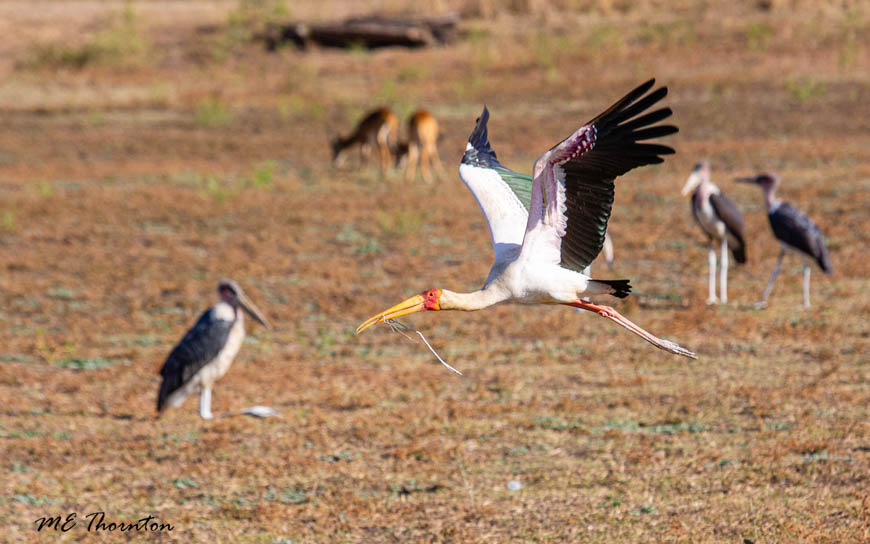
The flood plain was covered with crash-landed storks and grazing impala. Here and there lurked marabou storks, hoping to make a quick meal of a vulnerable young Yellow-bill, or a chick fallen from a nest.
The sky above was filled with hundreds of soaring storks, and a few martial eagles as well. I have photos of eagles diving on and eating fledglings – and even photos of one defending its kill from marabous.
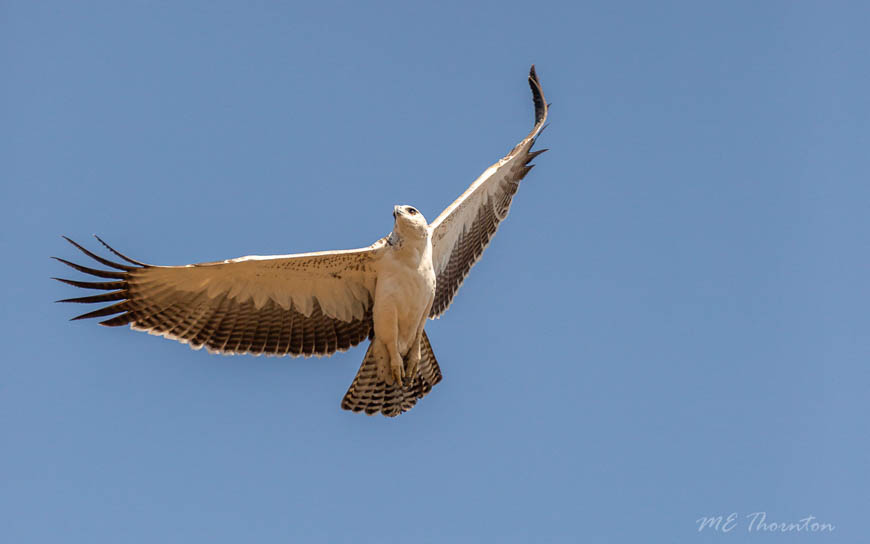
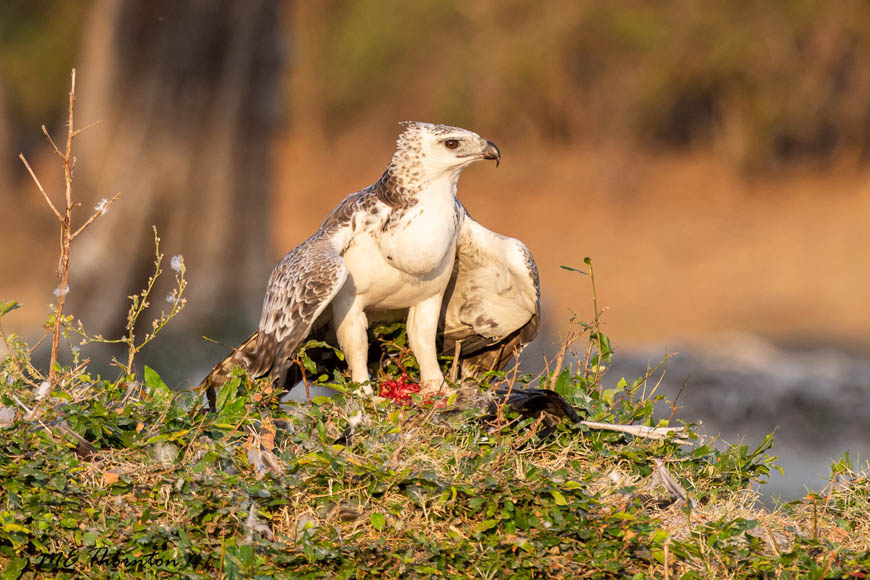
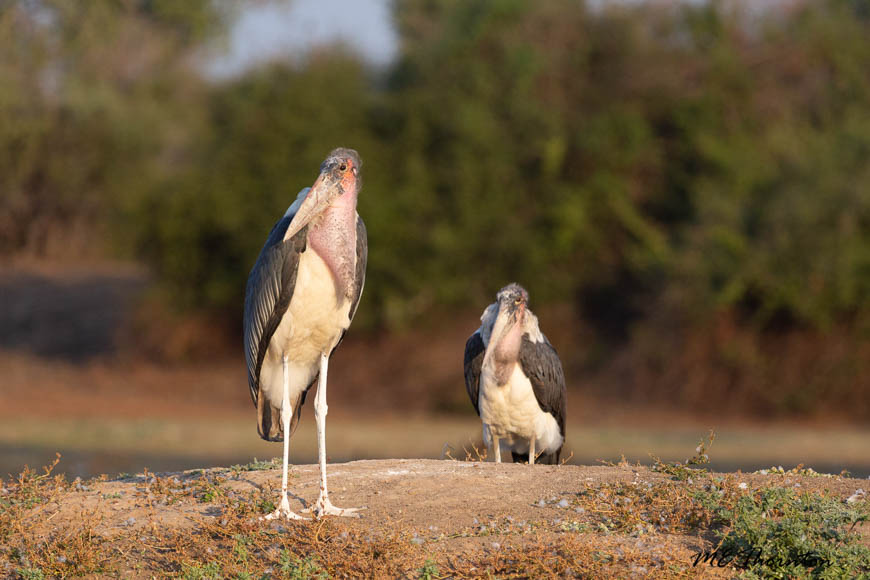
Through the flood plain ran a deep stream channel. It presented excellent cover for leopards, and one had ambushed an antelope that grazed too close to the edge. When we first saw the leopard, in late morning, it was resting by its kill. We saw it again in the afternoon golden hour, when shadow and light fell on it rather dramatically, resulting in some of my favorite leopard photos of the safari. (The photos are not for the faint of heart, however.)
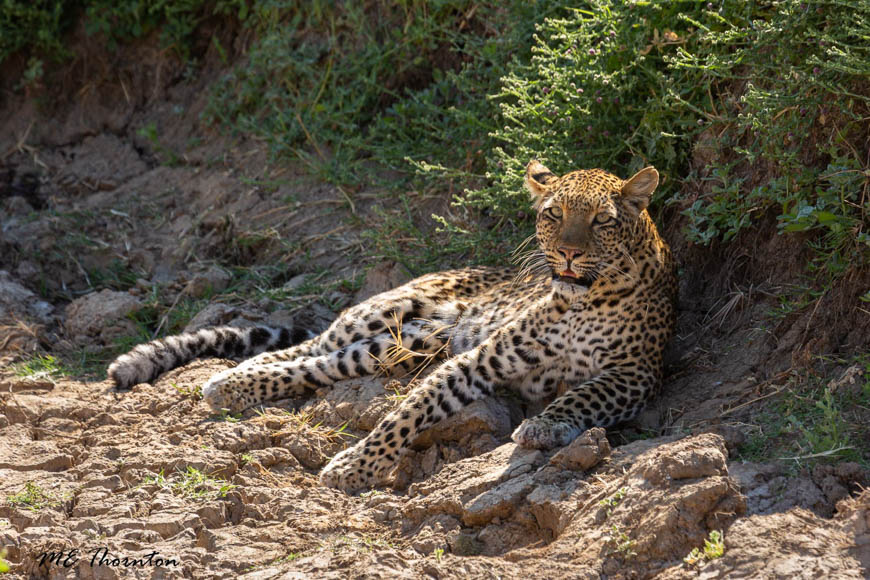
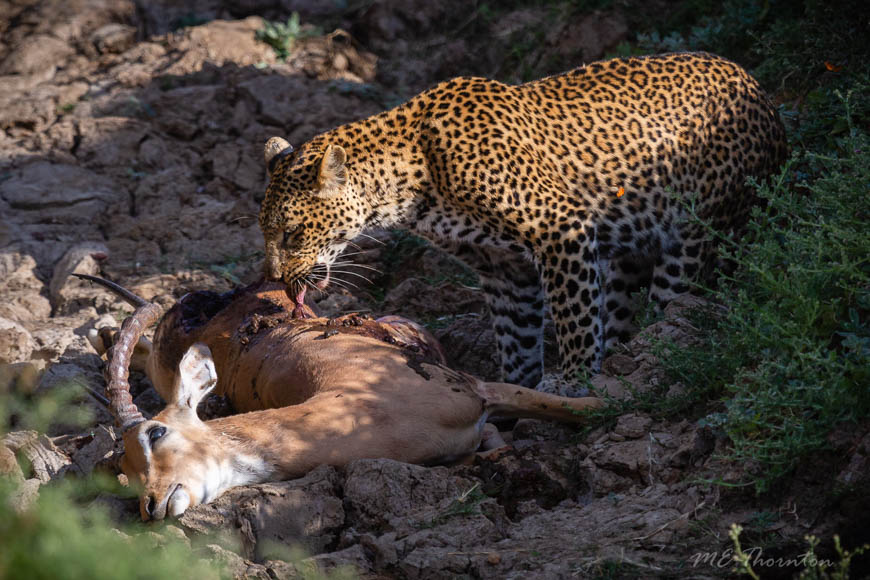
Perhaps the most fascinating experience I had on Edward’s safari involved two hippos, a few hyaenas, and about a hundred vultures.
One morning we found a hippo, killed overnight by another, in what must have been a truly horrific battle. We found it early, when only a handful of vultures had arrived. The hippo was covered in blood, head to tail. It had deep puncture wounds and lacerations from bites by the victor. There were many brush marks across its hide, where the attacking hippo scraped its whiskers in the loser’s own blood. The victorious hippo apparently even took a huge bite out of the dead hippo’s groin!
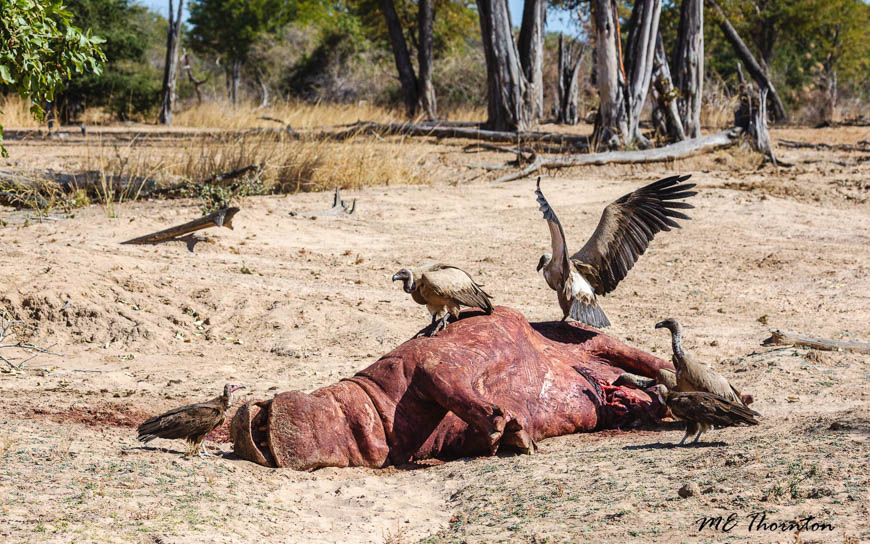
As I say, it was a horrific and pitiful sight to behold. But it was an incredible opportunity for in-depth observation of the cycle of life and death in nature.
We photographed the hippo for a good while, as more vultures arrived. When we returned to it that afternoon, both the hippo and its final battlefield were covered with vultures (we counted at least five species of them). The scene was chaotic as the birds competed for the remains! Again we stayed, taking photos well into the golden hour before moving on to search for leopards – and discovered one eating a porcupine.
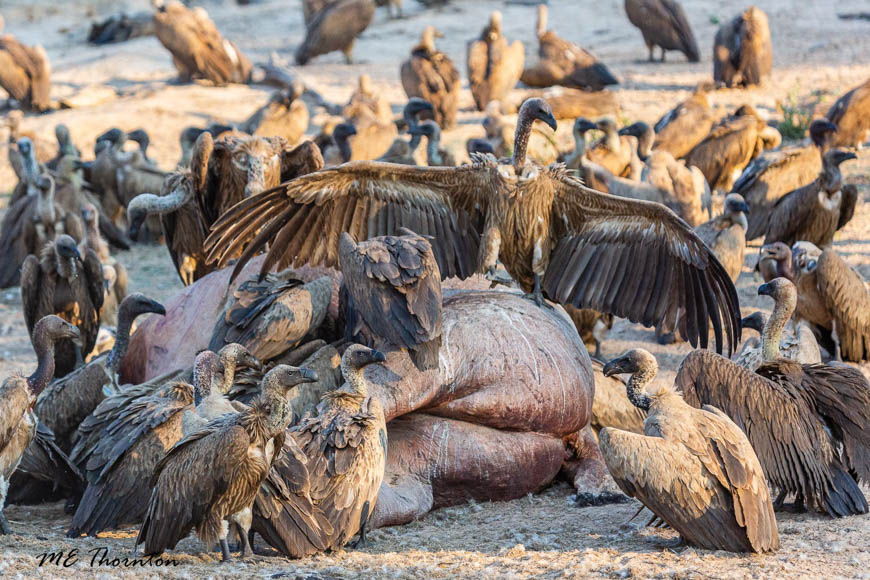
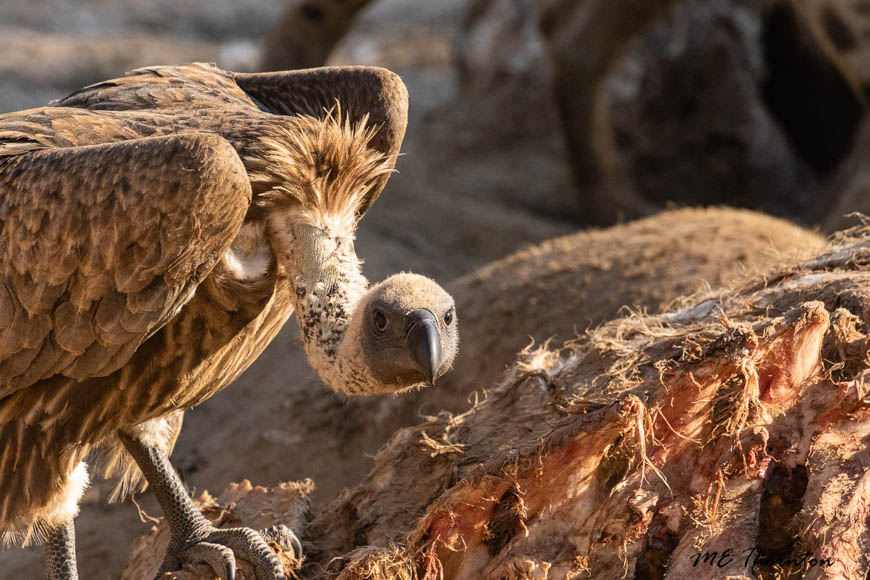
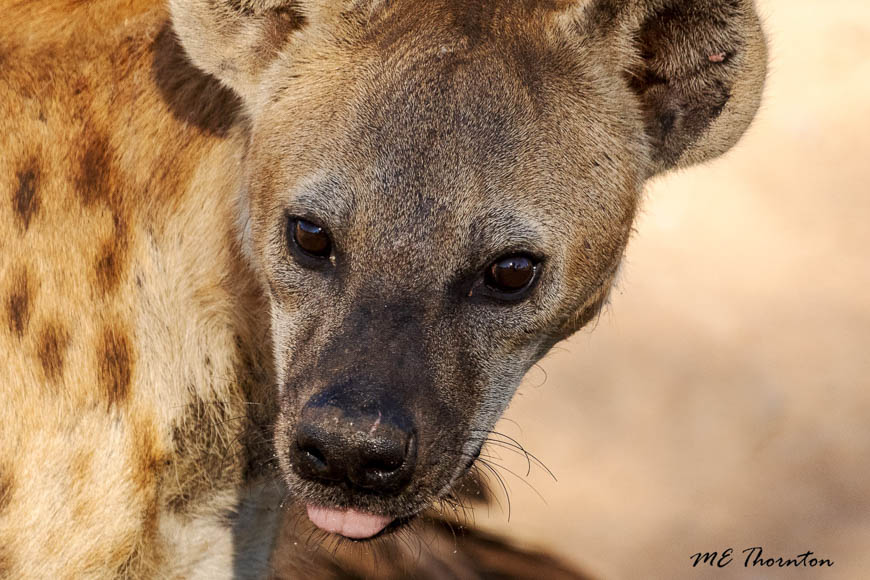
The following morning, we returned once more to that hippo kill. By this time the beast had been thoroughly consumed by hyaenas, vultures, and presumably, lions. Just three hyaenas remained at the kill, along with a few dozen vultures. The birds were now too heavy to fly. Many flopped about, but most simply lay on the ground, digesting their meals. So too did the hyaenas.
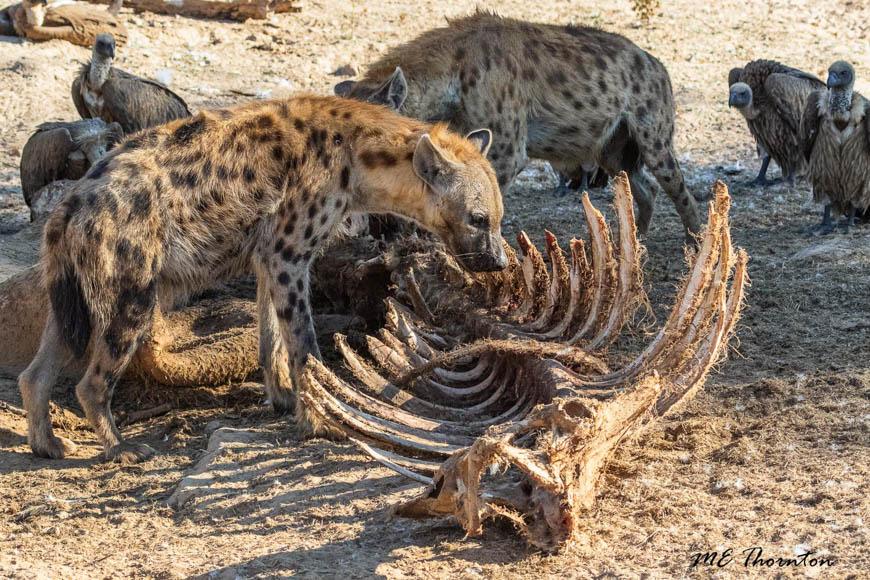
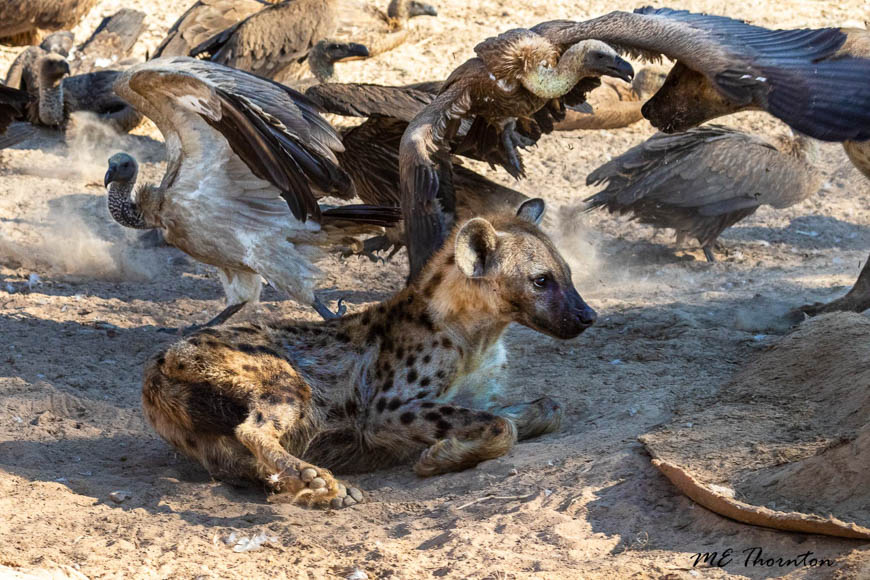
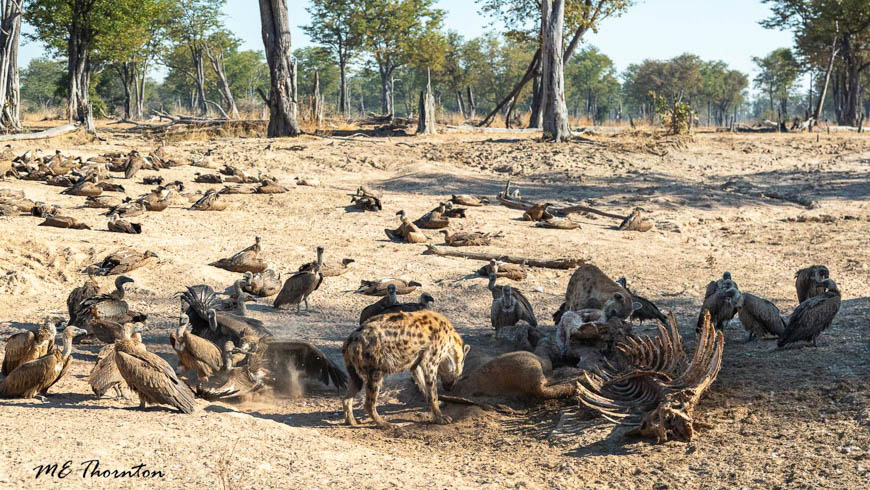
In only some 30 hours, the hippo had been completely reduced from a huge, living animal to nothing but a rib cage, a heavily gnawed pelvis, a partial skull and a patch of hide!
The efficiency of scavengers in the wild has always fascinated me, but never more than when I watched this event unfold. The death of that one hippo meant life for hundreds of other animals. It was amazing to watch, and a privilege to be able to photograph it all.
Closing
I hope that this report gives a fair picture of what you might experience on an Edward Selfe photo safari. If I’ve waxed too poetic, or pushed the vibrance too far in Lightroom, it’s probably because I’ve never stopped dreaming of my time in South Luangwa. Not one day went by without incredible photo opportunities.
In fact, I’m so in love with Zambia that I’m returning for another of Edward’s safaris this coming September. So let me close with a quick note about Edward’s travel consultants.
Travel arrangements for Edward Selfe safaris are through Emma Seaman’s People and Places travel consultants. Emma, her staff and colleagues provided me with outstanding assistance for all of my connections from Botswana to Chindeni Bush Camp in South Luangwa, as well as for meeting up with Edward in Mfuwe. This was no mean trick, coming from deep in the Okavango delta. People and Places is superb.
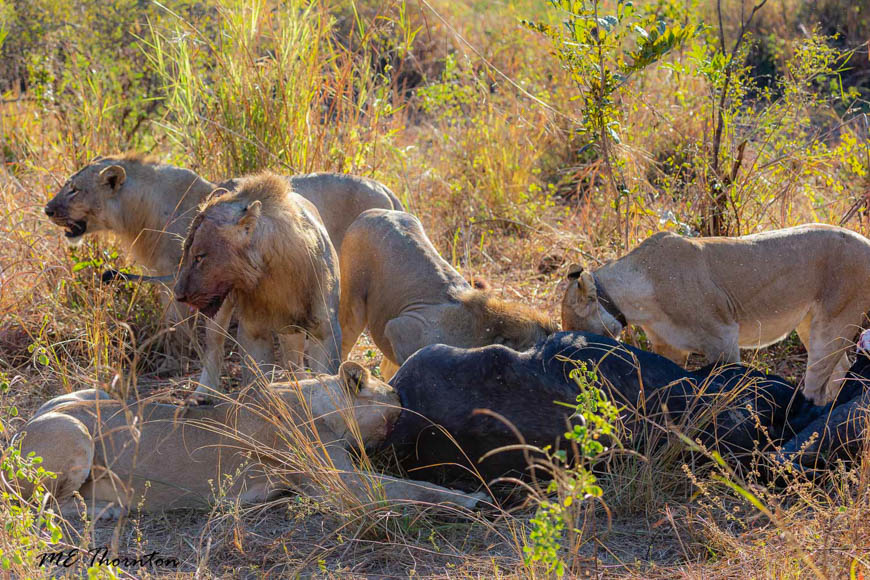
I’d also like to add one note about wildlife conservation in South Luangwa National Park.
On the morning we photographed that lion pride on a buffalo, I was excited to see one of the lionesses wearing a GPS collar. We use similar tracking collars in the United States National Park Service, to help protect critical species in our parks. So, seeing that lioness wearing one added to my admiration for the Zambian Carnivore Programme and the Zambia Department of National Parks and Wildlife.
Her collar, and several good conversations I had with Edward and some of the courageous park rangers who protected us on our safari, led me to make a small financial contribution last year, to help the Carnivore Programme during the pandemic. I’m making another contribution this year, and I encourage you to help them, too.
From a National Park Service retiree and avid wildlife photographer, thanks for reading. If you’re considering a photo safari, Edward Selfe is second to none. You’ll be well pleased with your decision to join him.
Best regards to Edward, Emma, my friends on the 2019 safari, and all of you who follow Edward’s blog.
